Previous Exhibitions
The City of Vaughan features a number of curated exhibitions, annually. View several recent exhibitions installed on the slate atrium gallery at Vaughan City Hall.
- OUTSIDE THE BOX (PDF)
- smARTcities (PDF)
- ARTmeetsDESIGN (PDF)
- urbanGRAFFITI (PDF)
- Project 99 (PDF)
- urbanJUNGLE (PDF)
- urbanHEARTBEAT (PDF)
- SUBWAYculture (PDF)
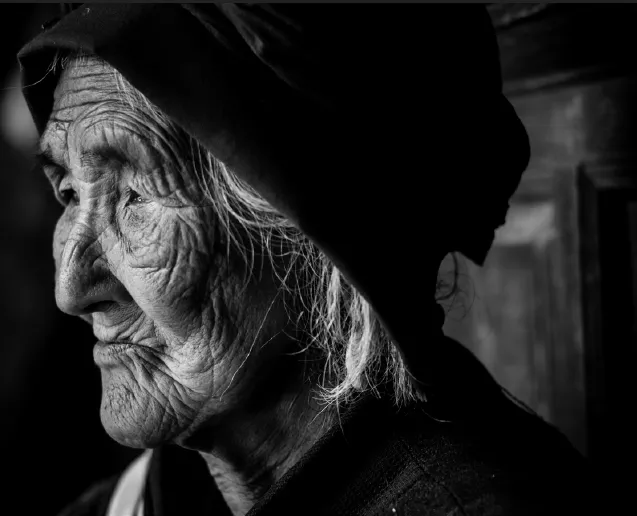
Project 99 - Stephen Woo
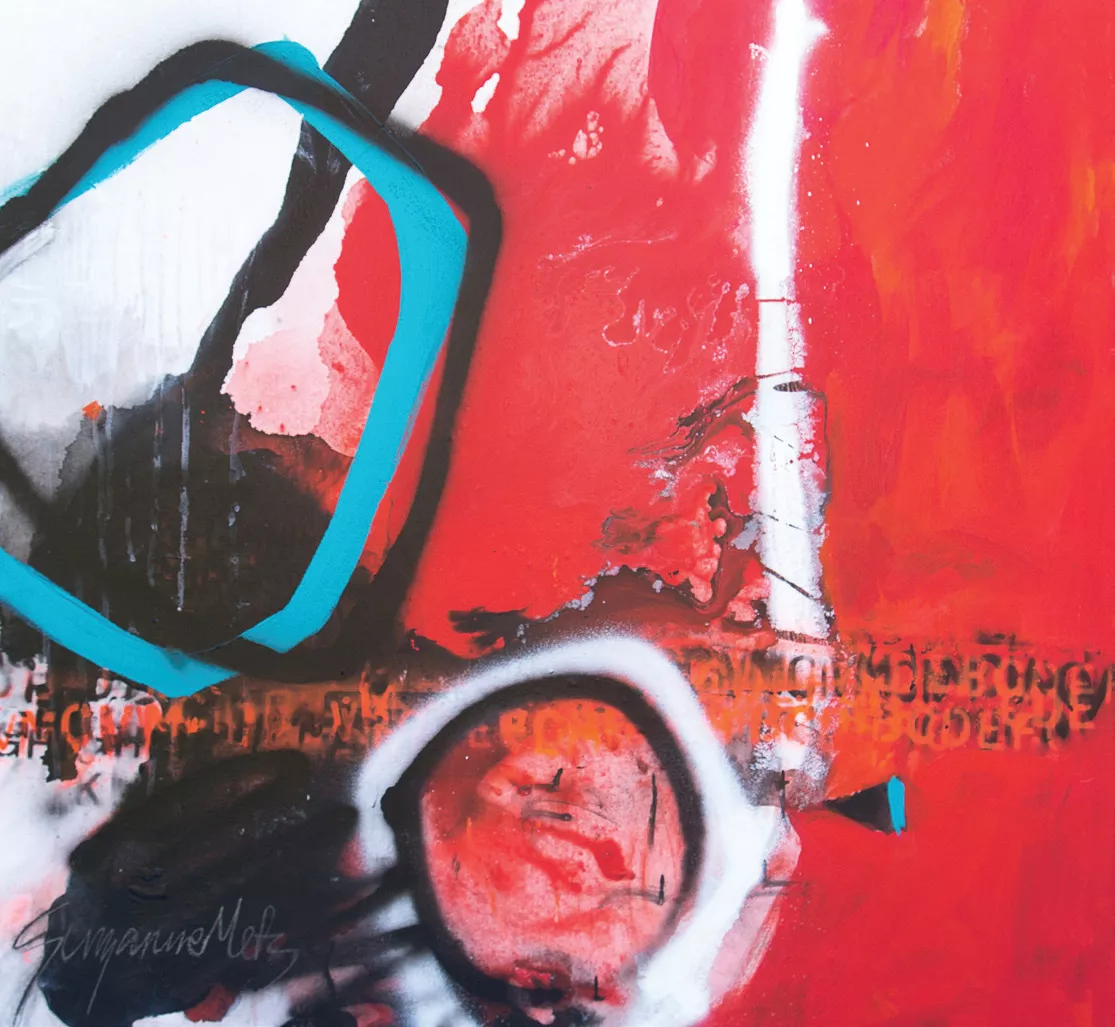
urbanGRAFFITI - Suzanne Metz
facingNORTH: art | symbol | story
ᐅᑭᐅᖅᑕᑐᒥᐅᓐᓂ ᑕᐅᑐᓂᖅ: ᑎᑦᑎᕋᐅᔭᖅᓂ I ᓴᓇᓯᓴᓂᖅ I ᐅᓂᒃᑲᓂᑯᓗ
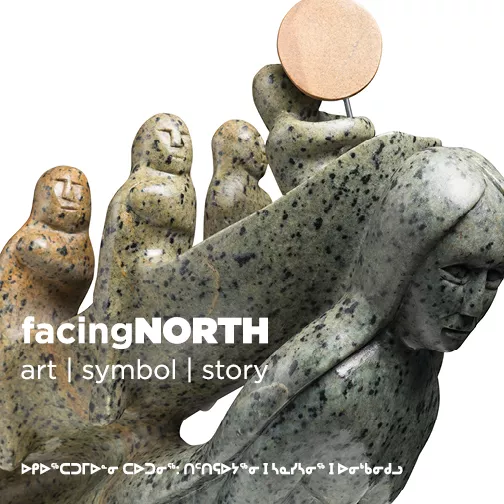
A statement from the curator
Mythical. Spiritual. Allegorical. Symbolic.
No single adjective can adequately characterize Inuit art.
Art created by the Indigenous inhabitants of the Arctic regions of Greenland, Canada and Alaska depicts a visual vocabulary of an ancient symbolic language – a narrative vocabulary born of collective memory,
oral storytelling and deeply rooted tradition. Paradoxically, some Inuit art may be perceived as being simultaneously simple and complex, historic and contemporary or benevolent and menacing. Undeniably though, Inuit art is an expression of a resilient people with a long, rich history of creativity dating back thousands of years while navigating through intense nomadic migrations and cultural interchanges.
Most contemporary Inuit art echoes historic precedent by depicting narrative or illustrative subject matter inspired by the powerful physical and spiritual relationships that bind Inuit society to a harsh environment.
Recognizable themes are preoccupied with survival – the traditional practices of hunting and seasonal migration, the central role played by the animals of the North with whom the Inuit share the land and depend
upon as a food source, the spirits of those animals and the shamans and mythologies that form links to an omnipresent spirit world.
Although some iconographic and thematic elements found in early Inuit art continue to appear in the work of many practising Inuit artists today, that is where the similarity ends. Inspiration has been recalibrated – it still taps into the traditional realm of Inuit cultural identity – but importantly, now it encourages highly individualistic styles, symbolism and subject matter.
All three Inuit artists featured in this exhibition, Abraham Ruben, Billy Merkosak and Irene Avaalaaqiaq, share strong ties to their traditional roots. Their vivid imaginations are ignited by sparks of the same inherent
muse; but each artist interprets ancestral myths and cultural intersections uniquely in their work as a personal response to their cultural identity.
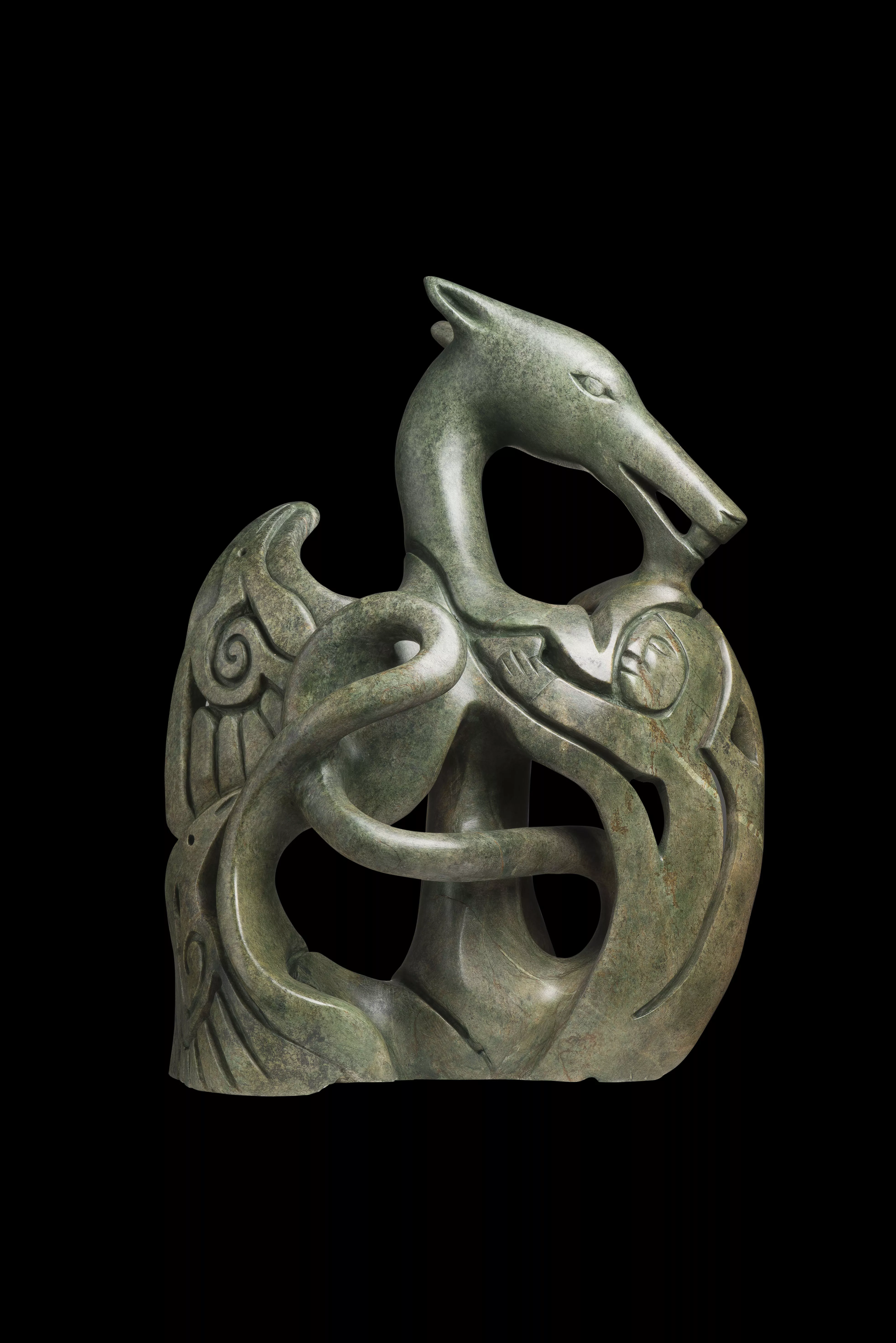
Abraham Anghik Ruben is an accomplished contemporary sculptor first and foremost. He deciphers myths and themes of the past through a symbolic sculptural language he formulated to transcend the spatial limitations of three-dimensionality. His exquisitely animated stone compositions are filtered through a mystical inner eye, translating ancient and imprinted collective memories into modern works of art.
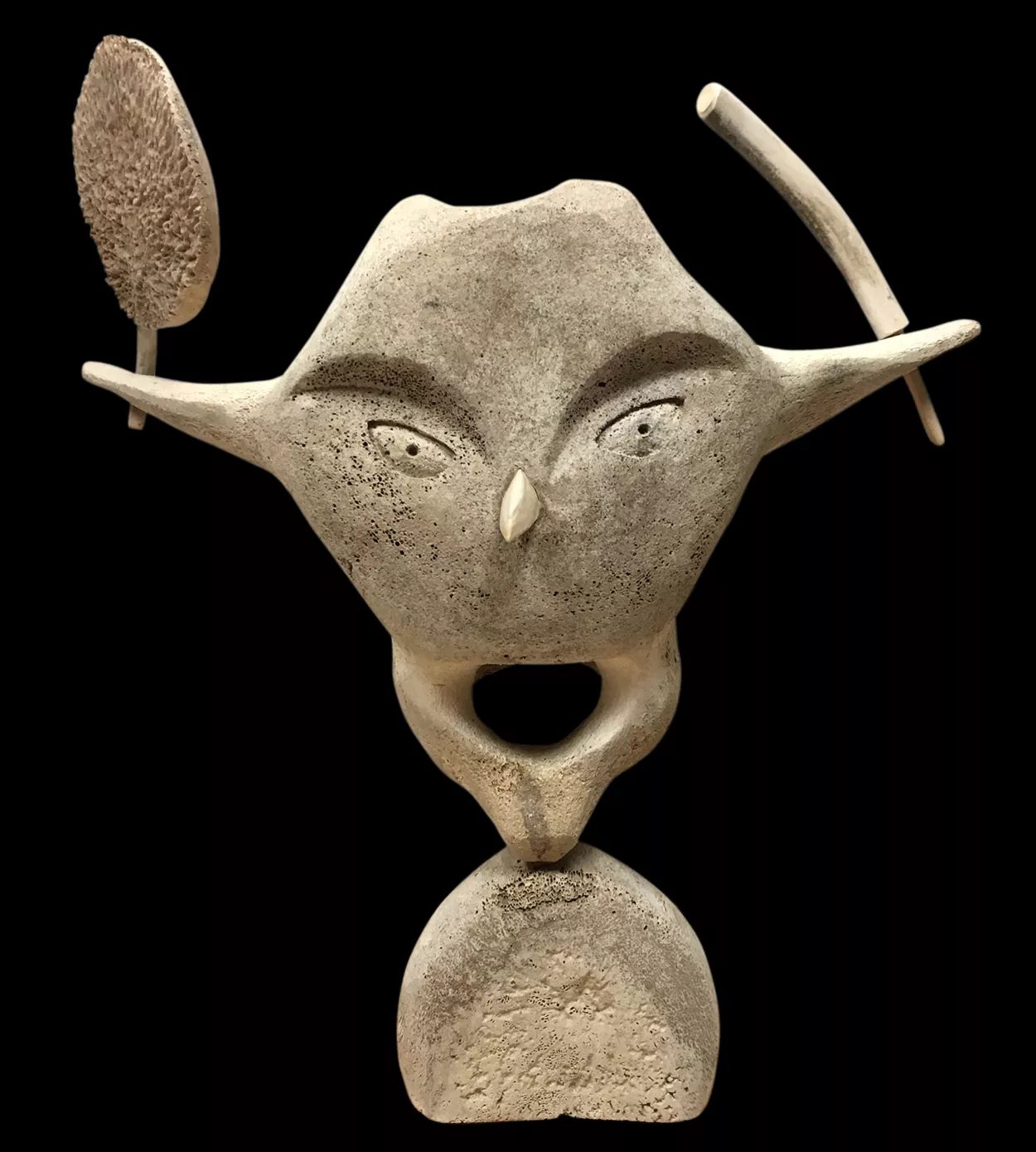
Billy Merkosak can see shamanistic figures and spiritual transformation journeys hiding in rough pieces of whalebone and antler, calling out to be manipulated into fantastic sculptural shapes. One can admire the pure aesthetic of his raw and forceful abstract images that exhibit a mesmerizing mix of benign and menacing expression, without even being familiar with the iconographical themes that inspired the work.
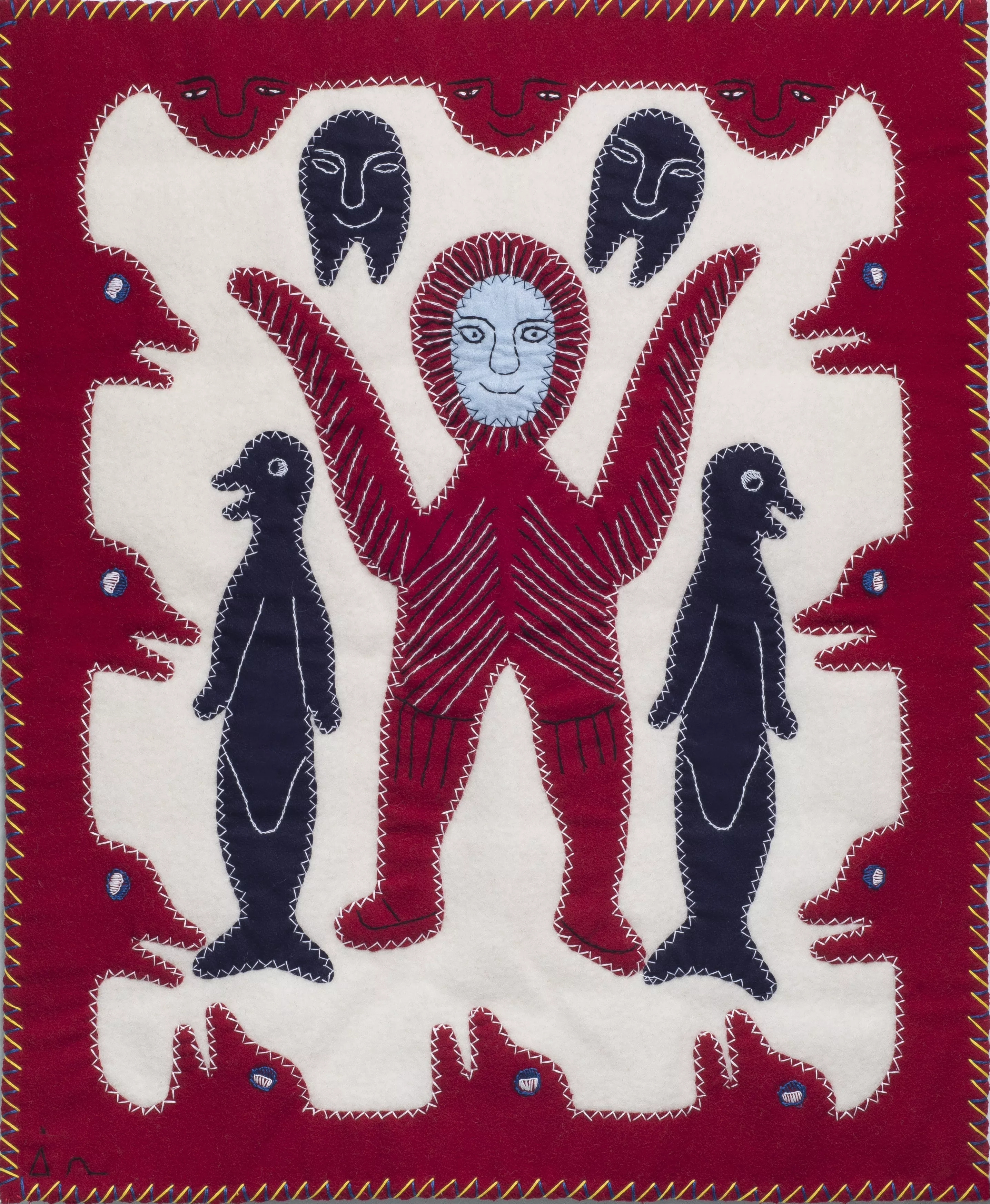
Irene Avaalaaqiaq populates her boldly engaging, highly coloured wall hangings with an original cast of myth meets reality characters, derived from both mythological elements and personal experience. Half-remembered transformation tales she recalls from her early childhood, coupled with an unrestrained imagination, masterfully morphs humans and animals into expressive abstract compositions created from only wool fabric and embroidery thread.
Present-day Inuit living in permanent settlements, in an era grappling with the impact of climate change, have a different relationship with the environment and storytelling than their nomadic ancestors. Increasingly
important, the transmission of ancestral knowledge and poignant myths, narrated by the symbolic art of Ruben, Merkosak and Avaalaaqiaq, ensures the preservation of ephemeral oral tradition.
The City of Vaughan proudly recognizes the outstanding creative accomplishments of these three exceptional Inuit artists – and all Indigenous artists – not just in celebration of National Indigenous History
Month during the month of June, but at all times – as respected artists, whose work contributes significantly to the wealth of the contemporary Canadian art scene.
facingNORTH: art | symbol | story was developed by the Economic and Cultural Development Department, City of Vaughan.
The City wishes to express sincere gratitude to the Kipling Gallery and the Canadian Arctic Producers for
their invaluable exhibition support and generous spirit of collaboration in realizing the exhibition.
View the facingNORTH: art | symbol | story exhibition brochure (PDF)
Selected Inuit Topics in Film
Explore Inuit culture by accessing the National Film Board of Canada's award-winning online Screening Room to stream the following films and other Indigenous topics free of charge:
Qallunaat!
This documentary pokes fun at the ways in which Inuit people have been treated as “exotic” documentary subjects by turning the lens onto the strange behaviours of Qallunaat (the Inuit word for white people). A collaboration between filmmaker Mark Sandiford and Inuit writer and satirist Zebedee Nungak, Qallunaat! brings the documentary form to an unexpected place in which oppression, history, and comedy collide.
View the documentary Qallunaat!
Shaman
This animated short tells the story of a ferocious polar bear turned to stone by an Inuk shaman. The tale is based on emerging filmmaker Echo Henoche's favourite legend, as told to her by her grandmother in her home community of Nain, Nunatsiavut, on Labrador's North Coast. Hand-drawn and painted by Henoche in a style all her own, Shaman is the first collaboration between the Labrador artist and the NFB.
I Am But A Little Woman
Inspired by an Inuit poem first assigned to paper in 1927, this animated short evokes the beauty and power of nature, as well as the bond between mother and daughter. As her daughter looks on, an Inuit woman creates a wall hanging filled with images of the spectacular Arctic landscape and traditional Inuit objects and iconography. Soon the boundaries between art and reality begin to dissolve.
View the short film I Am But A Little Woman
Breaths
In this evocative short documentary, Inuk singer-songwriter and humanitarian Susan Aglukark weaves together stories of artistry, family, and belonging as she explores the complex cultural shifts of the last 50 years of Inuit life. Turning her lens on the turbulence of colonial transition, director Nyla Innuksuk examines the forces that shaped Aglukark's voice and how that voice is now being translated for a new generation of Inuit artists. Produced by the National Film Board of Canada in co-operation with the National Arts Centre and the Governor General's Performing Arts Awards Foundation on the occasion of the 2016 Governor General's Performing Arts.
